 W
WFermentation is a metabolic process that produces chemical changes in organic substrates through the action of enzymes. In biochemistry, it is narrowly defined as the extraction of energy from carbohydrates in the absence of oxygen. In food production, it may more broadly refer to any process in which the activity of microorganisms brings about a desirable change to a foodstuff or beverage. The science of fermentation is known as zymology.
 W
WIn food processing, fermentation is the conversion of carbohydrates to alcohol or organic acids using microorganisms—yeasts or bacteria—under anaerobic (oxygen-free) conditions. Fermentation usually implies that the action of microorganisms is desired. The science of fermentation is known as zymology or zymurgy.
 W
WAn alcoholic drink is a drink that contains ethanol, a type of alcohol produced by fermentation of grains, fruits, or other sources of sugar that acts as a drug. The consumption of alcohol plays an important social role in many cultures. Most countries have laws regulating the production, sale, and consumption of alcoholic beverages. Regulations may require the labeling of the percentage alcohol content and the use of a warning label. And some countries ban such activities entirely, but alcoholic drinks are legal in most parts of the world. The global alcoholic drink industry exceeded $1 trillion in 2018.
 W
WAmasi (in Zulu and Xhosa, maas in Afrikaans and mafi in Sesotho,is the common word for fermented milk that tastes like cottage cheese or plain yogurt. It is very popular in South Africa and Lesotho. Amasi is traditionally prepared by storing unpasteurised cow's milk in a calabash container or hide sack to allow it to ferment. The fermenting milk develops a watery substance called umlaza; the remainder is amasi. This thick liquid is mostly poured over the mealie meal porridge called pap, or drunk straight. It is traditionally served in a clay pot and eaten with wooden spoons. Amasi is also produced commercially using Lactococcus lactis subspecies lactis and L. lactis subspecies cremoris.
 W
WAmazake is a traditional sweet, low-alcohol Japanese drink made from fermented rice. Amazake dates from the Kofun period, and it is mentioned in the Nihon Shoki. It is part of the family of traditional Japanese foods made using the koji mold Aspergillus oryzae , which also includes miso, soy sauce, and sake.
 W
WApo or Apong is an alcohol drink commonly found among the tribes in the Northeast India states of Arunachal Pradesh and Assam. It is prepared by fermentation of rice. It is known by various names across different tribes in Arunachal Pradesh and Assam.
 W
WDoogh, dhallë, ayran or tan is a cold savory yogurt-based beverage, popular across Western Asia, Central Asia, South Asia, Southeastern Europe and Eastern Europe. The principal ingredients are yogurt, water and salt. Herbs such as mint may be optionally added. Some varieties are carbonated.
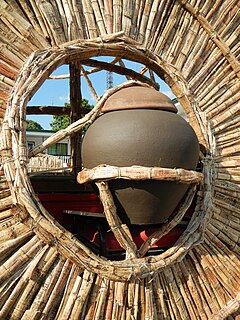 W
WBasi is a fermented alcoholic beverage made from sugarcane in the Ilocos region of northern Luzon in the Philippines.
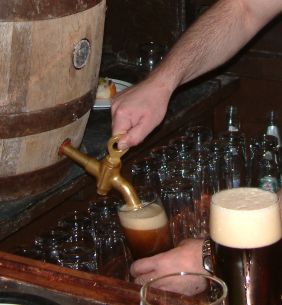 W
WBeer is one of the oldest and most widely consumed alcoholic drinks in the world, and the third most popular drink overall after water and tea. It is produced by the brewing and fermentation of starches, mainly derived from cereal grains—most commonly from malted barley, though wheat, maize (corn), rice, and oats are also used. During the brewing process, fermentation of the starch sugars in the wort produces ethanol and carbonation in the resulting beer. Most modern beer is brewed with hops, which add bitterness and other flavours and act as a natural preservative and stabilizing agent. Other flavouring agents such as gruit, herbs, or fruits may be included or used instead of hops. In commercial brewing, the natural carbonation effect is often removed during processing and replaced with forced carbonation.
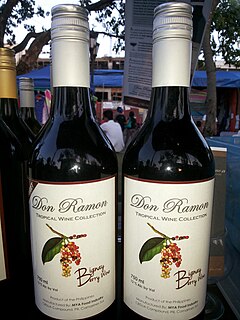 W
WBignay wine, also known as bugnay wine, is a Filipino fruit wine made from the berries of the native bignay or bugnay tree. It is deep red in color and is slightly sweet with a fruity fragrance.
 W
WBikkle (ビックル) is a Japanese yogurt-based drink. Produced by Japanese drink giant Suntory, it can be found in vending machines for 100-120 yen and also at convenience stores and supermarkets. It comes in a small glass bottle, although since 2007, "Big Bikkle" is also available in a larger 500ml plastic bottle.
 W
WBionade [ˌbi.(j)oˈnaːdə] is a German range of non-alcoholic, organic fermented and carbonated beverages. It is manufactured in the Bavarian town of Ostheim vor der Rhön by the Peter beer brewery. Sales started in 1995 and Bionade is now available in most European countries. Until 2018 Bionade GmbH was a subsidiary of Radeberger, a group of breweries which is a division of Dr. Oetker. Now Bionade is part of the Hassia Group.
 W
WBoza, also bosa, bozo is a fermented beverage popularly made in parts of North Africa, Central and Western Asia, Caucasus and Southeast Europe. It is a malt drink made by fermenting various grains: maize (corn) and wheat in Turkey, wheat or millet in Bulgaria, Romania, North Macedonia, Serbia and Bosnia and Herzegovina and barley in Ancient Egypt. It has a thick consistency, a low alcohol content, and a slightly acidic sweet flavor.
 W
WCalpis is a Japanese uncarbonated soft drink, manufactured by Calpis Co., Ltd. , a subsidiary of Asahi Breweries headquartered in Shibuya, Tokyo.
 W
WChal, or shubat, is a Turkic beverage of fermented camel milk, sparkling white with a sour flavor, popular in Central Asia — particularly in Kazakhstan and Turkmenistan. In Kazakhstan the drink is known as shubat, and is a staple summer food. Due to preparation requirements and perishable nature, chal has proved difficult to export. Agaran is collected from the surface of chal.
 W
WChhaang or chang is a Nepalese and Tibetan alcoholic beverage also popular in parts of the eastern Himalayas, Yakkha, Limbu, Newar, Sunuwar, Rai, Gurung, Magar, Sherpa, Tamang and Lepcha communities. Among the Lepcha, it is called Chi.
 W
WChicha is a fermented (alcoholic) or non-fermented beverage of Latin America, emerging from the Andes and Amazonia regions. In both the pre- and post-Spanish conquest periods, corn beer made from a variety of maize landraces has been the most common form of chicha. However, chicha is also made from a variety of other cultigens and wild plants, including, among others, quinoa, kañiwa, peanut, manioc, palm fruit, rice, potato, oca, and chañar. There are many regional variations of chicha. In the Inca Empire, chicha had ceremonial and ritual uses.
 W
WCider is an alcoholic beverage made from the fermented juice of apples. Cider is widely available in the United Kingdom and the Republic of Ireland. The UK has the world's highest per capita consumption, as well as the largest cider-producing companies. Ciders from the South West of England are generally stronger. Cider is also popular in many Commonwealth countries, such as India, Canada, Australia, and New Zealand. As well as the UK and its former colonies, cider is popular in Portugal, France, northern Italy, and northern Spain. Central Europe also has its own types of cider with Rhineland-Palatinate and Hesse producing a particularly tart version known as Apfelwein. In the U.S., varieties of fermented cider are often called hard cider to distinguish alcoholic cider from non-alcoholic apple cider or "sweet cider", also made from apples. In Canada, cider cannot contain less than 2.5% or over 13% absolute alcohol by volume.
 W
WDuhat wine, also called lomboy wine, is a Filipino fruit wine made from the fruits of black plum (duhat). It has a bright purple-red color. It is mostly produced in Southern Luzon.
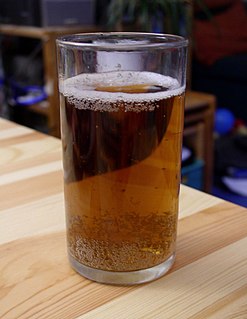 W
WFassbrause [ˈfasˌbʁaʊzə] (listen), literally "keg soda", is a non-alcoholic or alcoholic German drink made from fruit and malt extract, traditionally stored in a keg. The original Fassbrause also includes spices and is a speciality of Berlin, where it is sometimes called Sportmolle.
 W
WTraditional ginger beer is a sweetened and carbonated, usually non-alcoholic beverage. Historically it was produced by the natural fermentation of prepared ginger spice, yeast and sugar.
 W
WHandia is a rice beer originating from the Indian subcontinent, popular in the Indian states of Bihar, Jharkhand, Odisha, Madhya Pradesh, Chhattisgarh and West Bengal.
 W
WHuangjiu, meaning yellow wine, is a Chinese alcoholic beverage, and is most popular in the Jiangnan area. Huangjiu is brewed by mixing boiled grains including rice, glutinous rice or millet with Qū as starter culture, followed by saccharification and fermentation at around 13-18 °C for fortnights. Its alcohol content is typically 8%-20%.
 W
WJabol is a slang name for a kind of cheap Polish fruit wine that is made from fermented fruit and is bottled at 8% to 18% alcohol by volume. Its name seems to be derived from jabłko, the Polish word for "apple," which it is often made from. Though it is usually fruit flavoured, it can come in other flavours such as chocolate or mint.
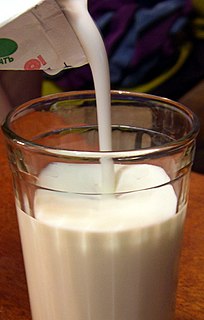 W
WKefir, is a fermented milk drink similar to a thin yogurt or ayran that is made from kefir grains, a specific type of mesophilic symbiotic culture. The drink originated in the North Caucasus, in particular the Elbrus environs along the upper mountainous regions of Karachay and Balkaria from where it came to Russia, and from there it spread to Europe and the United States, where it is prepared by inoculating the milk of cows, goats, or sheep with kefir grains.
 W
WKilju is the name of a Finnish home-made alcoholic beverage, known in English as sugar wine. It is made of sugar, yeast, and water, and sometimes toppings such as citrus fruits, apples, berry juices, or artificial flavourings. Its alcohol content is usually 15–17% ABV.
 W
WKombucha is a fermented, lightly effervescent, sweetened black or green tea drink commonly consumed for its purported health benefits. Sometimes the beverage is called kombucha tea to distinguish it from the culture of bacteria and yeast. Juice, spices, fruit or other flavorings are often added.
 W
WKumis Mongolian: айраг, ääryg) is a fermented dairy product traditionally made from mare's milk or donkey milk. The drink remains important to the peoples of the Central Asian steppes, of Turkic and Mongol origin: Kazakhs, Bashkirs, Kalmyks, Kyrgyz, Mongols, and Sakha. Kumis was historically consumed by the Khitan, Jurchen, Hungarians and Han Chinese of North China as well.
 W
WKvass is a traditional fermented Slavic and Baltic beverage commonly made from rye bread, which is known in many Central and Eastern European and Asian countries as "black bread". The colour of the bread used contributes to the colour of the resulting drink. Kvass's alcohol content from fermentation is typically low. It may be flavoured with fruits such as strawberries or raisins, or with herbs such as mint. Kvass is especially popular in Russia.
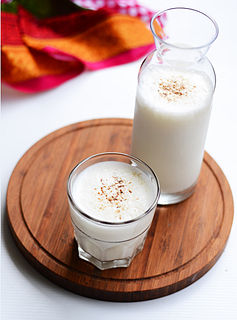 W
WLassi is a popular traditional dahi (yogurt)-based drink that originated in the Punjab region. Lassi is a blend of yogurt, water, spices and sometimes fruit. Namkeen (salty) lassi is similar to doogh, while sweet and mango lassis are like milkshakes. Lassi may be infused with cannabis in the form of bhang.
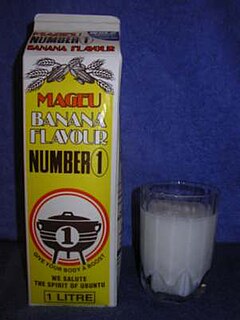 W
WMageu, Mahewu, Mahleu, Magau (xau-Namibia), maHewu, amaRhewu or amaHewu is a traditional Southern African, non-alcoholic drink among many of the Chewa/Nyanja, Shona, Ndebele, Nama Khoikhoi and Damara people, Sotho people, Tswana people and Nguni people made from fermented mealie pap. Home production is still widely practiced, but the drink is also available at many supermarkets, being produced at factories. Its taste is derived predominantly from the lactic acid that is produced during fermentation, but commercial mageu is often flavoured and sweetened, much in the way commercially available yogurt is. Similar beverages are also made in other parts of Africa.
 W
WA malt drink is a fermented drink in which the primary ingredient is the grain, or seed, of the barley plant, which has been allowed to sprout slightly in a traditional way called "malting" before it is processed.
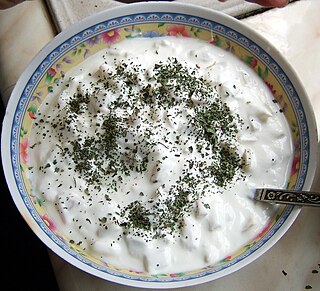 W
WMatzoon or matsoni is a fermented milk product of Armenian origin, distributed in Armenia and Georgia. In Japan, it is called Caspian Sea yogurt.
 W
WMauby, also known as maví in the Dominican Republic and Puerto Rico, mabi in Haiti and Martinique, and maubi in the Virgin Islands and Dutch Caribbean islands of St. Eustatius, St. Maarten and Saba), is a tree bark-based beverage grown, and widely consumed, in the Caribbean. It is made with sugar and the bark and/or fruit of certain species in the genus Colubrina including Colubrina elliptica and Colubrina arborescens, a small tree native to the northern Caribbean and south Florida. Recipes usually include other ingredients as well, spices such as aniseed being very common. Mauby was traditionally a fermented beverage made in small batches, but is now predominantly a commercial non-fermented soft drink.
 W
WMbege is a kind of banana beer traditional to the Chagga ethnic group of Tanzania located in Kilimanjaro region. It is an alcoholic drink made from fermented bananas. The process of making of mbege is labor-intensive and time-consuming as the majority of the process is done by hand without the aid of modern technology. The initial taste of mbege is said to be sweet and is followed by a slightly sour aftertaste.
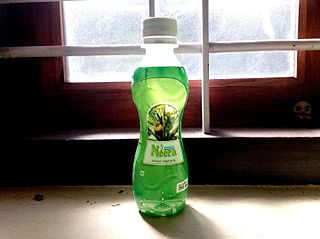 W
WNeera, also called palm nectar, is a sap extracted from the inflorescence of various species of toddy palms and used as a drink. Neera extraction is generally performed before sunrise. It is sweet, translucent in colour. It is susceptible to natural fermentation at ambient temperature within a few hours of extraction. Once fermented, neera becomes toddy. Neera is widely consumed in India, Sri Lanka, Africa, Malaysia, Indonesia, Thailand, and Myanmar. Neera is not the juice made from palm fruit.
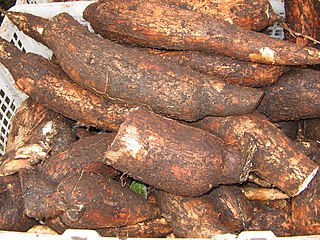 W
WNihamanchï is a beer brewed from manioc by indigenous peoples of South America. It is also known as nihamanci, nijimanche, or nijiamanchi, and is related to chicha.
 W
WNoah's wine is a colloquial allusion meaning alcoholic beverages. The advent of this type of beverage and the discovery of fermentation are traditionally attributed, by explication from biblical sources, to Noah. The phrase has been used in both fictional and nonfictional literature.
 W
WOshikundu or ontaku is a traditional Namibian drink made from fermented millet (mahangu). Both alcoholic and non-alcoholic varieties exist. It is made from cereal. It is often drunk the same day. It is widely sold in open markets.
 W
WPalm wine, known by several local names, is an alcoholic beverage created from the sap of various species of palm tree such as the palmyra, date palms, and coconut palms. It is known by various names in different regions and is common in various parts of Africa, the Caribbean, South America, South Asia, Southeast Asia and Micronesia.
 W
WPodpiwek is a Polish and Lithuanian non-alcoholic beverage.
 W
WPulque, or octli, is an alcoholic beverage made from the fermented sap of the maguey (agave) plant. It is traditional in central Mexico, where it has been produced for millennia. It has the color of milk, a rather viscous consistency and a sour yeast-like taste.
 W
WPurl or wormwood ale is an English drink. It was originally made by infusing ale with the tops of various species of Artemisia ("wormwood"), especially those of Artemisia maritima, "sea wormwood", which grows in coastal salt marsh and bears the alternative English common name of "old woman". Other purgative or bitter herbs such as orange peel or senna might also be used. The drink was commonly drunk in the early hours of the morning at which time it was popular with labourers.
 W
WRejuvelac is a kind of grain water that was invented and promoted by Ann Wigmore, born in Cropos, Lithuania. The beverage is closely related to a traditional Romanian drink, called borș, a fermented wheat bran that can be used to make a sour soup called ciorbă or as the basis for Vegan cheeses.
 W
WRice wine is an alcoholic beverage fermented and distilled from rice, traditionally consumed in East Asia, Southeast Asia and South Asia. Rice wine is made by the fermentation of rice starch that has been converted to sugars. Microbes are the source of the enzymes that convert the starches to sugar.
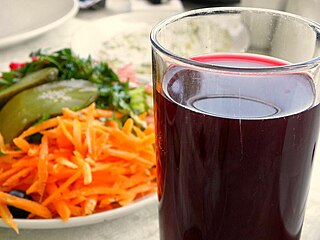 W
WŞalgam or Şalgam Suyu, pronounced "shal-gam", is a popular traditional beverage from the southern Turkish cities of Adana, Hatay, Tarsus, Mersin, Kahramanmaras, İzmir and the Çukurova region. The name şalgam is Persian in origin; in Persian it is written شلغم and means Turnip. It is either called turnip juice, turnip water, shalgam juice, or shalgam water. The French traveler, naturalist and writer Pierre Belon described its production method in the 15th century. Şalgam is produced by lactic acid fermentation. Studies have shown that the juice of the purple carrot used in Şalgam reduces the effects of high-carbohydrate, high-fat diets in rats. It is one of the most popular beverages during winter in Turkey.
 W
WSikhye is a traditional sweet Korean rice beverage, usually served as a dessert. In addition to its liquid ingredients, Sikhye contains grains of cooked rice and in some cases pine nuts. It is similar to the Chinese jiuniang and Japanese amazake.
 W
WThe Speyer wine bottle is a sealed vessel, presumed to contain liquid wine, and so named because it was unearthed from a Roman tomb found near Speyer, Germany. It is considered the world's oldest known bottle of wine.
 W
WTapuy, also spelled tapuey or tapey, is a rice wine produced in the Philippines. It is a traditional beverage originated from Banaue and the Mountain Province, where it is used for important occasions such as weddings, rice harvesting ceremonies, fiestas and cultural fairs. It is produced from either pure glutinous rice or a combination of glutinous and non-glutinous rice together with onuad roots, ginger extract, and a powdered starter culture locally known as bubod. Tapuy is an Ilocano name. The wine is more commonly called baya or bayah in Igorot languages.
 W
WTejuíno is a cold beverage made from fermented corn and popularly consumed in the Mexican states of Jalisco and Chihuahua. Tejuino is usually made from corn dough, the same kind used for tortillas and tamales. The dough is mixed with water and piloncillo and boiled until the liquid is very thick. The liquid is then allowed to ferment very slightly. The resulting drink is generally served cold, with lime juice, a pinch of salt and a scoop of shaved ice or lime sorbet.
 W
WTepache is a fermented beverage made from the peel and the rind of pineapples, and is sweetened either with piloncillo or brown sugar, seasoned with powdered cinnamon, and served cold. Though tepache is fermented for several days, the resulting drink does not contain much alcohol. In Mexican culinary practice, the alcoholic content of tepache may be increased with a small amount of beer.
 W
WTibicos, or water kefir, is a traditional fermented drink made with water and a symbiotic culture of bacteria and yeasts (SCOBY) held in a polysaccharide biofilm matrix created by the bacteria. It is sometimes consumed as an alternative to milk-based probiotic drinks or tea-cultured products such as kombucha. Water kefir is typically made as a probiotic homebrew beverage. The finished product, if bottled, will produce a carbonated beverage.
 W
WTongba is a millet-based alcoholic beverage found in the eastern mountainous region of Nepal and the neighbouring Darjeeling and Sikkim. It is the traditional and indigenous drink of the Limbu people of eastern Nepal. Tongba is culturally and religiously important to the Limbu people. Taplejung is the ultimate destination for drinking Tongba. Offering Tongba is a symbol of respect to a guest among the Limbu people and also an important drink for special occasions and festivals.
 W
WTubâ is a Filipino alcoholic beverage created from the sap of various species of palm trees. During the Spanish colonial period, tubâ was introduced to Guam, the Marianas, and Mexico via the Manila Galleons. They remain popular in Mexico, especially in the states of Colima, Jalisco, Michoacán, and Guerrero. Tubâ was also introduced to the Torres Strait Islands of Australia in the mid-19th century by Filipino immigrant workers in the pearling industry.
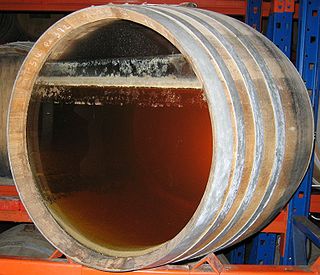 W
WUllage is a winemaking term that has several meanings but most commonly refers to the headspace of air between wine and the top of the container holding the wine. It can also refer to the process of evaporation that creates the headspace itself or it can be used as a past tense verb to describe a wine barrel or bottle that has gone through the evaporation process. The headspace of air is a mixture mostly of alcohol and water vapors with carbon dioxide that is a by-product of the fermentation process. In containers that are not completely air-tight, oxygen can also seep into this space. While some oxygen is beneficial to the aging process of wine, excessive amounts can lead to oxidation and other various wine faults. This is why wine in the barrels is regularly "topped up" and refilled to the top with wine in order to minimize the head space. In the bottle, the ullage or "fill level" of the wine can be an important indicator of the kind of care and storage conditions that the wine was kept in. After-market resellers and wine auction houses will often inspect the ullage levels of older vintages to determine the potential quality and value of wine.
 W
WUmqombothi, from the Xhosa and Zulu language, is a beer made from maize (corn), maize malt, sorghum malt, yeast and water. It is commonly found in South Africa. It is very rich in vitamin B. The beer has a rather low alcohol content and is known to have a heavy and distinctly sour aroma. In appearance, the beer is opaque and light tan in colour. It has a thick, creamy and gritty consistency.
 W
WWine is an alcoholic drink typically made from fermented grapes. Yeast consumes the sugar in the grapes and converts it to ethanol and carbon dioxide, releasing heat in the process. Different varieties of grapes and strains of yeasts are major factors in different styles of wine. These differences result from the complex interactions between the biochemical development of the grape, the reactions involved in fermentation, the grape's growing environment (terroir), and the wine production process. Many countries enact legal appellations intended to define styles and qualities of wine. These typically restrict the geographical origin and permitted varieties of grapes, as well as other aspects of wine production. Wines not made from grapes involve fermentation of additional crops, including rice wine and other fruit wines such as plum, cherry, pomegranate, currant and elderberry.
 W
WYayık ayranı, also known as Turkish buttermilk, is a traditional Turkish drink produced from fermented buttermaking by-products, water and salt. It has been traditionally prepared in barrel churns or skin bags. Despite the similar name, it is distinct from ayran. Goat, sheep, or cow's milk can be used for Turkish buttermilk production. Certain acid curd cheeses such as çökelek could also be obtained from yayık ayranı when heated.